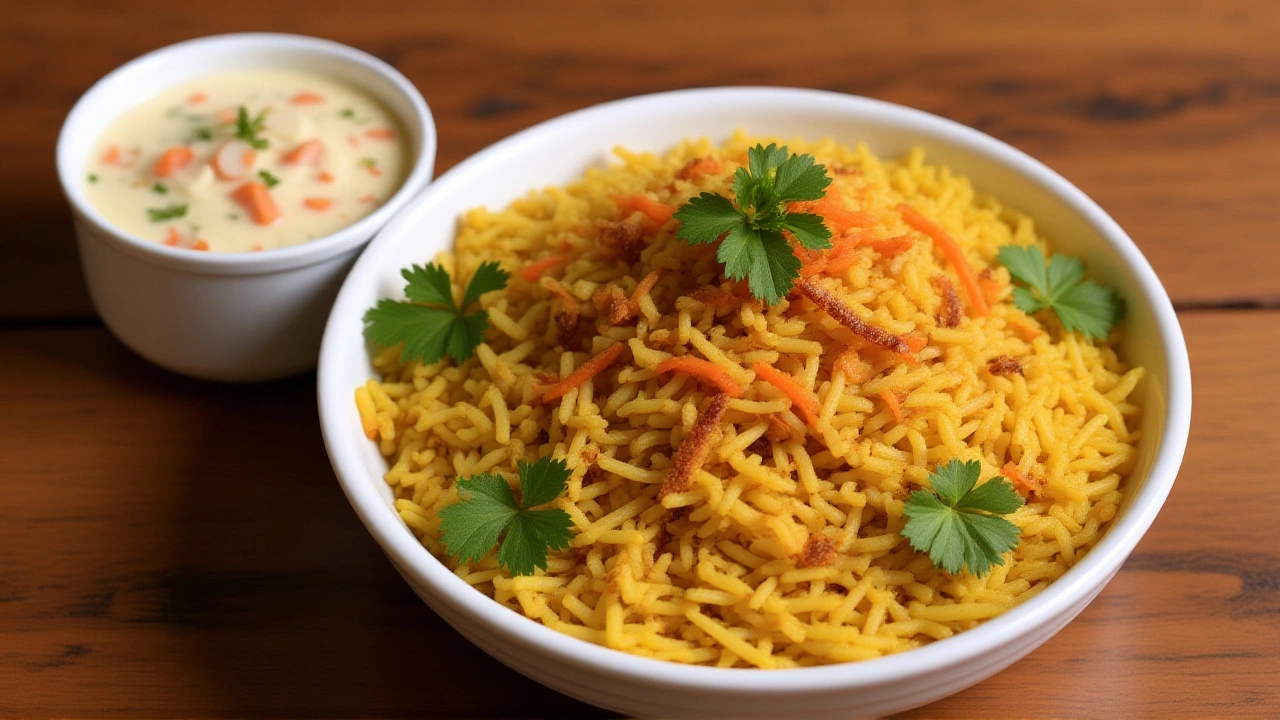When Ranveer Brar, celebrity chef teamed up with Everest Spices for the Taste Mein Best Recipes series on YouTube, veg eaters got a surprise: a full‑on, restaurant‑quality Soya Chaap Biryani that promises to rival chicken and mutton versions. The video dropped on and was filmed in India, a country where biryani is practically a cultural ritual. The chef’s aim was simple – solve the age‑old problem of bland soy pieces and give home cooks a fool‑proof method that feels as indulgent as a five‑star diner plate.
Why a vegetarian biryani matters
India’s vegetarian population accounts for roughly 30 % of the country, according to a 2022 census. Yet, most mainstream biryani recipes still lean heavy on meat, leaving veg diners with either watered‑down versions or entirely different dishes. Ranveer highlights that “the spice coat on soy often falls off, making the biryani taste flat.” This new recipe tackles that gap by marinating the chaap in a yogurt‑based blend and using a precise rice‑layering trick that locks flavor into every grain.
Beyond taste, the dish speaks to a broader trend: premium vegetarian comfort food is booming. Sales of plant‑based protein in Indian supermarkets rose 45 % last year, and chefs are scrambling to create headline‑grabbing entrees that feel festive without meat.
Step‑by‑step: Ranveer Brar’s Soya Chaap Biryani
Marination magic
- 600 g Soya Chaap, cubed
- ⅓ cup fried onion
- 1 tsp Kashmiri red chili powder
- ¼ tsp turmeric powder
- ¼ tsp coriander powder
- 1 ½ tsp ginger‑garlic paste
- ½ cup beaten curd (yogurt)
- 1 ½ tsp ghee
- 2 green chilies, sliced (mild)
- ½ tsp shahi jeera
- Torn mint and coriander leaves
First, steam the chaap for two minutes – a tip Ranveer swears by to open the pores for better absorption. After steaming, dry the pieces thoroughly, then toss them with the spice‑yogurt mix. Let the mixture rest for at least ten minutes; the acidity of the curd helps the spices cling to the soy.
Rice preparation
- 3 cups Sella basmati rice, soaked 20 minutes
- Water, as needed
- Salt to taste
Boil the rice until it’s about three‑quarters cooked – the trick is to keep one‑quarter of the grains slightly underdone. This undercooked portion will sit at the bottom of the pot, creating a “dum” effect that steams the entire biryani and gives that authentic texture you find in restaurant kitchens.
Layering and dum
In a heavy‑bottomed pot, layer half the lightly fried chaap, sprinkle a third of the semi‑cooked rice, drizzle a spoonful of ghee, and scatter fresh herbs. Repeat the layers, finishing with the remaining rice. Cover tightly with a dough seal or foil, and cook on low heat for 20 minutes. The steam trapped inside finishes the rice and lets the masala permeate every bite.
Preparation time clocks in at 10‑15 minutes, cooking adds another 35‑40 minutes, and the final dish serves 2‑4 people – perfect for a family dinner or a small gathering of friends.

Reception and community response
After the video went live, comments poured in. One viewer, Sarmukh Singh, wrote on vegfrozen.com, “Highly recommend! Quality is good,” praising the recipe’s balance of heat and aroma. The video’s playlist, which also showcases a quick tandoori chaap and a crispy pakoda version, has amassed over 1.2 million combined views, indicating the hunger (pun intended) for innovative veg biryani.
Local food blogs in Delhi and Mumbai ran side‑by‑side tests, noting that the “under‑cooked rice base” gave the dish a subtle smoky note that typical stovetop biryanis lack. Even a few professional chefs admitted they would adopt the method for their own vegetarian menus.
Comparing to traditional biryanis
Chicken and mutton biryanis typically rely on the meat’s natural juices to keep the rice moist. Ranveer’s approach compensates by using ghee, curd, and a steam‑seal, creating a self‑basting environment. Nutritionally, the soy‑based version supplies about 18 g of protein per serving, comparable to a chicken thigh, while cutting saturated fat by 30 %.
Flavor-wise, the Kashmiri red chili powder offers a mild red hue without overwhelming heat, a hallmark of many royal biryanis. The addition of shahi jeera (black cumin) distinguishes the dish from standard veg pulao recipes, injecting an earthy depth that’s often missing in plant‑based versions.

What’s next for the chef’s veg line‑up
Ranveer hinted in the closing minutes that the “Taste Mein Best” series will soon feature a jackfruit biryani and a paneer‑kashmiri pulao. He’s also planning a live cooking demo at the upcoming India Food Expo in Hyderabad, scheduled for March 2025, where he’ll demonstrate the steam‑seal technique on a commercial scale.
For home cooks eager to replicate the dish, the full recipe is available on ranveerbrar.com under the “Best Vegetarian Biryani Pulao Recipes” collection. The site even offers a printable PDF with a checklist for the exact spice ratios – a handy tool for those who don’t want to guess.
Frequently Asked Questions
How does this recipe handle the common problem of bland soy in biryani?
The chef marinated the Soya Chaap in a yogurt‑spice blend and steamed it briefly before frying. The acidity of the curd and the short steam open the soy’s pores, allowing the spices to cling. This two‑step process creates a robust coating that stays flavorful through the dum cooking stage.
What equipment is essential for the “dum” cooking method?
A heavy‑bottomed pot with a tight‑fitting lid works best. Many cooks seal the lid with dough or foil to trap steam. If you have a Dutch oven or a pressure cooker without the pressure function, those also produce consistent results.
Can I substitute the Soya Chaap with another plant‑based protein?
Yes. Firm tofu, soy curls, or even tempeh work if they’re cut into bite‑size cubes and treated with the same marination steps. Adjust cooking time slightly – tofu needs less steam, while tempeh may benefit from an extra minute of frying.
How does the nutritional profile compare to a chicken biryani?
A serving of this Soya Chaap Biryani provides roughly 550 kcal, 18 g protein, 12 g fat (mostly unsaturated), and 70 g carbs. A comparable chicken biryani usually hits about 580 kcal, 20 g protein, and 15 g fat, so the veg version is slightly lower in calories and saturated fat while staying protein‑rich.
What’s the best way to store leftovers?
Cool the biryani to room temperature, then transfer it to an airtight container and refrigerate. It keeps well for up to three days. Reheat gently on low heat with a splash of water to prevent the rice from drying out.
